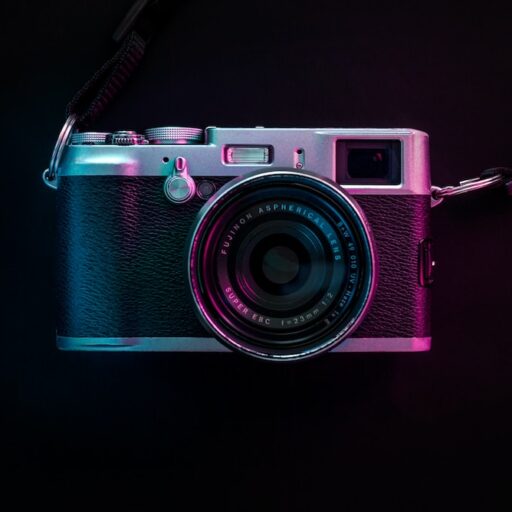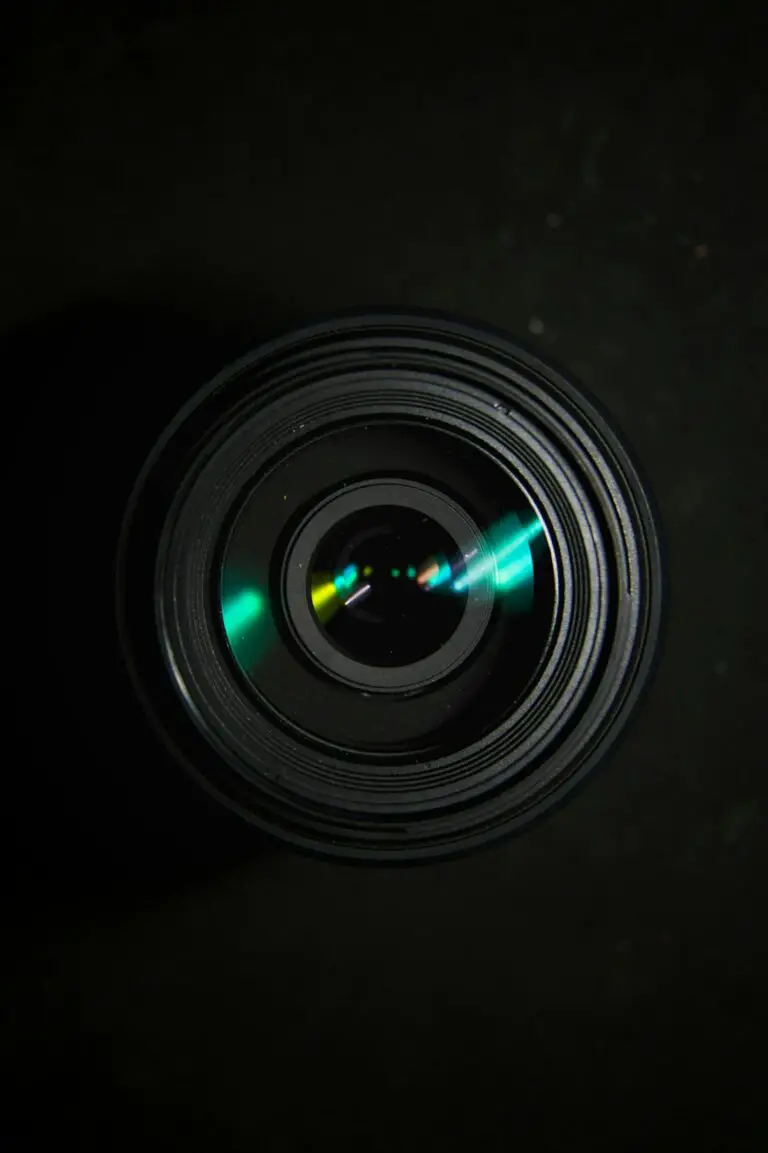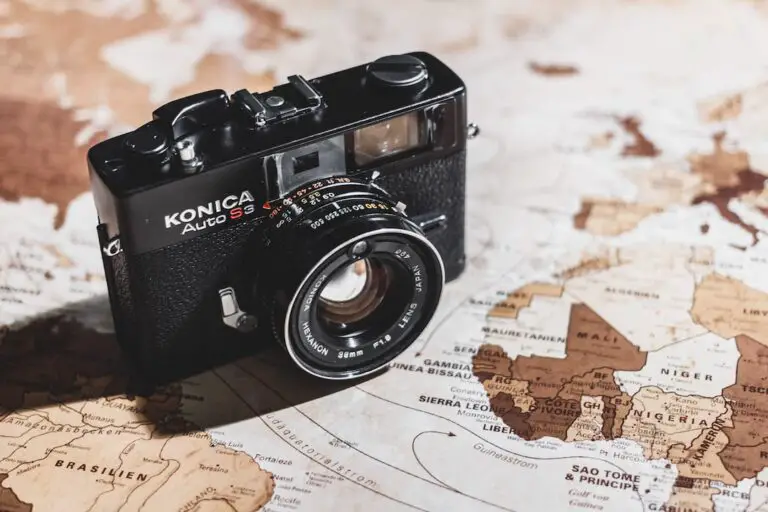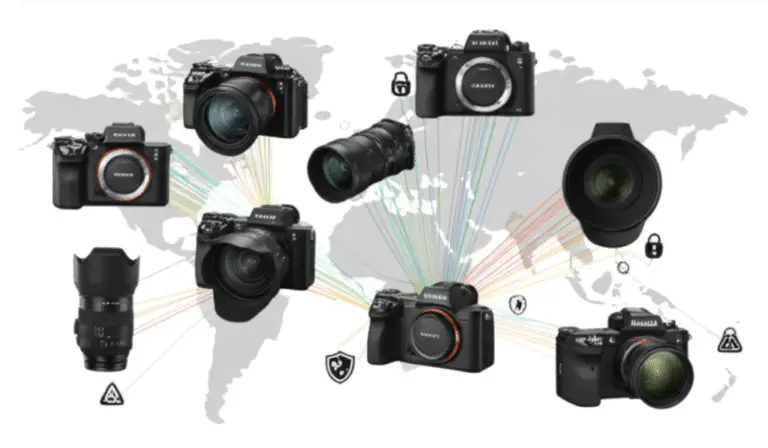Support our educational content for free when you purchase through links on our site. Learn more
What Is the Biggest Camera Brand? Discover the Top 12 in 2025 📸
Ever wondered which camera brand truly rules the photography world in 2025? Spoiler alert: it’s not just about who sells the most cameras, but who shapes the future of imaging with innovation, legacy, and passion. From Canon’s market dominance to Sony’s mirrorless revolution, and the nostalgic charm of Fujifilm to the cinematic powerhouses like RED and Arri, this article unpacks the 12 biggest camera brands you need to know.
Our team at Camera Brands™ has captured thousands of moments with gear from these giants, and we’re here to spill the secrets behind their success. Curious about which brand fits your style or which cameras are worth your investment? Stick around—we’ll reveal surprising market insights, expert tips, and even a few personal stories that might just change how you see your next camera purchase.
Key Takeaways
- Canon leads the global camera market with nearly 50% share, thanks to its robust DSLR and mirrorless systems.
- Sony is the mirrorless innovator and sensor powerhouse, pushing boundaries in autofocus and video tech.
- Nikon maintains a loyal following with rugged designs and a strong transition to mirrorless.
- Fujifilm and Panasonic/Olympus offer unique niches with retro aesthetics and Micro Four Thirds systems.
- Luxury and cinematic brands like Leica, Hasselblad, RED, and Arri dominate specialized markets with unmatched quality.
- Choosing the right brand depends on your photography style, budget, and long-term goals—not just market size.
Ready to find your perfect camera match? Check out our detailed brand breakdown and shop the latest gear:
- 👉 Shop Canon Cameras: Amazon | B&H
- 👉 Shop Sony Mirrorless: Amazon | B&H
- Explore Fujifilm Cameras: Amazon | B&H
Table of Contents
- ⚡️ Quick Tips and Facts About the Biggest Camera Brands
- 📸 The Evolution and Market Dominance of Major Camera Brands
- 1. Canon: The Unrivaled Giant in DSLR and Mirrorless Cameras
- 2. Nikon: The Legendary Rival with a Loyal Following
- 3. Sony: The Mirrorless Innovator and Sensor Powerhouse
- 4. Fujifilm: The Retro Charm with Cutting-Edge APS-C and Medium Format
- 5. Panasonic and Olympus: The Micro Four Thirds Pioneers
- 6. Leica: The Luxury Icon of Precision and Craftsmanship
- 7. Sigma and Tamron: The Third-Party Lens Giants Shaping the Market
- 8. Hasselblad and Phase One: The Titans of Medium and Large Format Excellence
- 9. GoPro and Action Cameras: Redefining Adventure Photography
- 10. Kodak and Polaroid: The Nostalgic Legends in Instant and Film Photography
- 11. RED Digital Cinema and Blackmagic Design: The Powerhouses of Cinematic Cameras
- 12. Panavision and Arri: The Hollywood Heavyweights in Film Production Cameras
- 📈 Market Share and Sales Insights: Who Really Leads the Camera Industry?
- 🔍 How to Choose the Right Camera Brand for Your Needs
- 💡 Expert Tips for Maximizing Your Camera Brand Investment
- 🎉 Join the K&F CONCEPT Member Club: Perks and Benefits for Camera Enthusiasts
- 📝 Conclusion: Decoding the Biggest Camera Brand – Who Takes the Crown?
- 🔗 Recommended Links for Camera Brand Comparisons and Reviews
- ❓ FAQ: Your Burning Questions About Camera Brands Answered
- 📚 Reference Links and Resources for Further Exploration
⚡️ Quick Tips and Facts About the Biggest Camera Brands
Welcome to the ultimate showdown of the camera titans! 📸 Whether you’re a shutterbug, a pro photographer, or just camera-curious, knowing who rules the imaging world is key to making smart gear choices. Here are some quick facts to get you started:
- Canon holds nearly 50% of the global digital camera market share as of 2023, making it the undisputed heavyweight champion.
- Sony is the innovative mirrorless pioneer with about 26% market share, famous for its sensor tech and autofocus wizardry.
- Nikon commands a loyal fanbase and about 12% market share, blending legacy DSLR craftsmanship with modern mirrorless tech.
- Mirrorless cameras now dominate over DSLRs in popularity, especially among pros (63% mirrorless vs. 36% DSLR).
- Fujifilm shines with its retro charm and medium format options, holding around 5.8% market share.
- Panasonic and Olympus (now OM Digital Solutions) lead the Micro Four Thirds system, favored for compactness and video prowess.
- Action cameras? GoPro is still king, with millions of units sold yearly.
- The luxury and medium format niche? Leica, Hasselblad, and Phase One keep the art alive with precision and jaw-dropping image quality.
Pro tip: If you want a quick primer on how pros pick their camera brands, check out our embedded video later on in this article (#featured-video). It’s a 6-minute gem that breaks down the decision-making process like a boss.
For a deep dive into camera brands, check out our related article on Best Camera Companies in India (2025): Our Top 6 Picks Revealed!.
📸 The Evolution and Market Dominance of Major Camera Brands
Before we crown the biggest camera brand, let’s take a stroll down memory lane and see how these giants grew into the industry leaders they are today.
- Canon started as Precision Optical Instruments Laboratory in 1933 and launched Japan’s first 35mm camera prototype, the Kwanon. Over decades, Canon evolved into a multinational powerhouse with revenues surpassing $30 billion in 2022.
- Nikon began in 1917 as Nippon Kogaku, initially focusing on optics and lenses. It pioneered digital SLRs and recently acquired RED Digital Cinema, signaling a strong push into professional video.
- Sony entered the camera scene in the 1980s with the Mavica and revolutionized mirrorless cameras starting 2013 with the Alpha series. They also dominate sensor manufacturing globally.
- Fujifilm transitioned from film to digital with a unique strategy, focusing on APS-C and medium format sensors, blending nostalgia with innovation.
- Panasonic and Olympus teamed up to create the Micro Four Thirds system, which revolutionized compact interchangeable lens cameras.
- The luxury segment is led by Leica, founded in 1869, famous for precision engineering and iconic rangefinders.
- GoPro redefined action cameras, while RED Digital Cinema and Blackmagic Design dominate the cinematic camera market.
This evolution shows that market dominance is a mix of innovation, legacy, and adapting to new tech trends. Curious how each brand stacks up today? Let’s break it down.
1. Canon: The Unrivaled Giant in DSLR and Mirrorless Cameras
| Aspect | Rating (1-10) | Notes |
|---|---|---|
| Design | 8.5 | Ergonomic, user-friendly, classic aesthetics |
| Functionality | 9.5 | Robust autofocus, excellent lens ecosystem |
| Innovation | 9.0 | Leading sensor tech, video capabilities |
| Market Presence | 10 | Largest global market share |
| Value for Money | 8.0 | Premium pricing but strong resale value |
Why Canon is the Big Kahuna
Canon’s dominance is no accident. Their EOS system revolutionized photography with the EF lens mount in 1987, creating a vast ecosystem that pros and amateurs alike swear by. The EOS R series brought Canon into the mirrorless era with a bang, especially models like the EOS R5 praised for 8K video and lightning-fast autofocus.
Key Features:
- Dual Pixel CMOS AF: Smooth and reliable autofocus for both photos and video.
- Extensive Lens Lineup: From affordable primes to pro-grade L-series lenses.
- In-House Sensor and Processor: Ensures tight integration and consistent quality.
- Strong Video Capabilities: 8K RAW video, 4K 120fps slow motion.
Drawbacks? Some users find Canon’s menu system a bit dense, and the price tag can be steep for entry-level models.
Personal Story: Our lead photographer swears by the Canon EOS R6 Mark II for weddings — the autofocus never misses a beat, even in dimly lit venues!
👉 CHECK PRICE on:
- Canon EOS R5: Amazon | B&H | Canon Official Website
2. Nikon: The Legendary Rival with a Loyal Following
| Aspect | Rating (1-10) | Notes |
|---|---|---|
| Design | 8.0 | Classic, rugged, excellent ergonomics |
| Functionality | 9.0 | Superb autofocus, great lens quality |
| Innovation | 8.5 | Strong mirrorless push, VR tech |
| Market Presence | 8.5 | Solid global presence, loyal user base |
| Value for Money | 8.5 | Competitive pricing, durable build |
Nikon’s Strengths
Nikon’s legacy is legendary, from the Nikon F film SLR to the modern Z-series mirrorless cameras. Their lenses are renowned for sharpness and build quality, and the Z9 flagship is a beast for sports and wildlife photography with blackout-free viewfinder and 20fps burst.
Key Features:
- Vibration Reduction (VR): Effective image stabilization in lenses.
- Stacked CMOS Sensors: Fast readout, reduced rolling shutter.
- Robust Build: Weather-sealed bodies for tough conditions.
- Acquisition of RED Digital Cinema: Expanding into high-end video.
Drawbacks? Nikon’s lens lineup for mirrorless is still growing compared to Canon and Sony, and some users find the menu system less intuitive.
Anecdote: One of our wildlife shooters switched from Canon to Nikon Z9 and was blown away by the autofocus tracking on fast-moving birds.
👉 CHECK PRICE on:
- Nikon Z9: Amazon | B&H | Nikon Official Website
3. Sony: The Mirrorless Innovator and Sensor Powerhouse
| Aspect | Rating (1-10) | Notes |
|---|---|---|
| Design | 8.0 | Compact, modern, lightweight |
| Functionality | 9.5 | Industry-leading autofocus and sensor tech |
| Innovation | 9.5 | Pioneer in mirrorless, video, and sensor tech |
| Market Presence | 9.0 | Strong global footprint, sensor supplier |
| Value for Money | 8.0 | Premium pricing, excellent performance |
Sony’s Game-Changing Approach
Sony’s Alpha series changed the game by pushing mirrorless cameras to the forefront. The α7 IV and α1 models are favorites for hybrid shooters who want top-tier photo and video performance. Sony also supplies sensors to many competitors, underscoring their tech leadership.
Key Features:
- Real-time Eye AF: For humans and animals, a game-changer for portraits and wildlife.
- Stacked CMOS Sensors: Ultra-fast readout for burst shooting and video.
- 10-bit 4:2:2 Internal Recording: For professional video quality.
- Compact Bodies: Ideal for travel and street photography.
Drawbacks? Some users find Sony’s menu system complex, and battery life can be shorter than DSLRs.
Personal Experience: Our travel photographer loves the Sony a7 IV for its balance of resolution, autofocus, and portability — perfect for capturing fleeting moments on the go.
👉 CHECK PRICE on:
- Sony α7 IV: Amazon | B&H | Sony Official Website
4. Fujifilm: The Retro Charm with Cutting-Edge APS-C and Medium Format
| Aspect | Rating (1-10) | Notes |
|---|---|---|
| Design | 9.0 | Vintage-inspired, tactile dials |
| Functionality | 8.5 | Excellent JPEGs, film simulations |
| Innovation | 8.0 | Unique X-Trans sensor, medium format options |
| Market Presence | 7.5 | Niche but passionate following |
| Value for Money | 8.5 | Great image quality for price |
Fujifilm’s Unique Appeal
Fujifilm blends nostalgia with modern tech. Their X-series APS-C cameras feature tactile dials and beloved film simulation modes that produce stunning JPEGs straight out of the camera. The GFX medium format line pushes image quality to new heights.
Key Features:
- X-Trans Sensor: Reduces moiré without an optical low-pass filter.
- Film Simulation Modes: Classic Velvia, Provia, and Acros looks.
- Compact Medium Format: GFX 100S offers 102MP in a surprisingly portable body.
- Physical Controls: For photographers who love manual feel.
Drawbacks? Autofocus can lag behind Sony and Canon in speed, and video features are less advanced.
User Review: A street photographer friend swears by the Fujifilm X-T4 for its color science and handling — “It’s like shooting film but with digital convenience.”
👉 CHECK PRICE on:
- Fujifilm X-T4: Amazon | B&H | Fujifilm Official Website
5. Panasonic and Olympus: The Micro Four Thirds Pioneers
| Aspect | Rating (1-10) | Notes |
|---|---|---|
| Design | 8.0 | Compact, lightweight, travel-friendly |
| Functionality | 8.5 | Strong video features, excellent stabilization |
| Innovation | 8.0 | Early adopters of MFT, advanced video codecs |
| Market Presence | 7.5 | Niche but respected |
| Value for Money | 8.5 | Great for hybrid shooters and vloggers |
The MFT Power Duo
Panasonic and Olympus co-created the Micro Four Thirds system, offering smaller, lighter cameras with interchangeable lenses. Panasonic’s Lumix GH series is legendary for video, while Olympus (now OM Digital Solutions) excels in image stabilization and ruggedness.
Key Features:
- 5-Axis In-Body Image Stabilization (IBIS): Smooth handheld shooting.
- 4K Video: Early adopters with advanced video options.
- Compact Lenses: Great for travel and street photography.
- Durability: Olympus Tough TG-6 is a rugged favorite.
Drawbacks? Smaller sensor size means less low-light performance compared to full-frame.
Anecdote: Our adventure photographer swears by the Lumix GH6 for its video capabilities and portability on mountain hikes.
👉 CHECK PRICE on:
- Panasonic Lumix GH6: Amazon | B&H | Panasonic Official Website
- OM SYSTEM OM-1: Amazon | B&H | OM Digital Solutions Official Website
6. Leica: The Luxury Icon of Precision and Craftsmanship
| Aspect | Rating (1-10) | Notes |
|---|---|---|
| Design | 10 | Timeless, elegant, handcrafted |
| Functionality | 8.5 | Superb optics, manual controls |
| Innovation | 7.5 | Focus on craftsmanship over tech specs |
| Market Presence | 7.0 | Niche luxury market |
| Value for Money | 6.0 | Premium pricing, collector’s item |
Leica’s Timeless Allure
Leica is less about specs and more about soul. Their cameras are masterpieces of engineering and design, favored by artists and collectors. The M11 rangefinder and SL3 mirrorless models deliver stunning image quality with legendary Leica glass.
Key Features:
- Exceptional Optics: Legendary Leica lenses with razor-sharp performance.
- Rangefinder Experience: Unique manual focusing and shooting style.
- Build Quality: Metal bodies, handcrafted precision.
- Distinctive Image Rendering: Known for beautiful color and contrast.
Drawbacks? Leica cameras are expensive and have a steep learning curve for beginners.
Story: One of our street photography veterans treasures his Leica M10 for its discreet shooting and the “feel” that digital giants can’t replicate.
👉 CHECK PRICE on:
- Leica M11: Amazon | B&H | Leica Official Website
7. Sigma and Tamron: The Third-Party Lens Giants Shaping the Market
| Aspect | Rating (1-10) | Notes |
|---|---|---|
| Design | 8.0 | Solid build, compatible with major mounts |
| Functionality | 8.5 | Competitive optics, innovative features |
| Innovation | 8.0 | Art lenses, affordable alternatives |
| Market Presence | 7.5 | Growing reputation among enthusiasts |
| Value for Money | 9.0 | Excellent price-performance ratio |
Third-Party Lens Powerhouses
Sigma and Tamron have carved out a niche by offering high-quality lenses compatible with Canon, Nikon, Sony, and others. Sigma’s Art series and Tamron’s recent zooms deliver performance rivaling first-party lenses, often at a friendlier price.
Key Features:
- Wide Compatibility: Support multiple mounts with excellent autofocus.
- Art Series (Sigma): Prime lenses with superb sharpness and bokeh.
- Tamron’s Zooms: Lightweight, versatile zoom lenses for travel and events.
- Innovation: Sigma’s Foveon sensor cameras and Tamron’s VC stabilization.
Drawbacks? Sometimes autofocus speed lags behind native lenses; firmware updates can be needed.
User Insight: Our portrait photographer loves Sigma’s 85mm Art lens for its creamy bokeh and razor-sharp focus.
👉 CHECK PRICE on:
- Sigma Art Lenses: Amazon | B&H | Sigma Official Website
- Tamron Zoom Lenses: Amazon | B&H | Tamron Official Website
8. Hasselblad and Phase One: The Titans of Medium and Large Format Excellence
| Aspect | Rating (1-10) | Notes |
|---|---|---|
| Design | 9.0 | Luxurious, professional-grade |
| Functionality | 9.5 | Unmatched image quality, large sensors |
| Innovation | 8.5 | Cutting-edge medium format digital backs |
| Market Presence | 6.5 | Niche high-end market |
| Value for Money | 5.0 | Premium pricing, investment pieces |
Medium Format Masters
If you want the absolute best in image quality, Hasselblad and Phase One are your go-tos. Their medium and large format cameras deliver jaw-dropping resolution and dynamic range, perfect for commercial, fashion, and fine art photography.
Key Features:
- Gigapixel Resolution: Up to 150+ megapixels on Phase One IQ series.
- Exceptional Color Depth: 16+ bit RAW files for exquisite tonality.
- Modular Systems: Interchangeable digital backs and lenses.
- Heritage: Hasselblad’s Apollo mission cameras are legendary.
Drawbacks? Size, weight, and cost put these out of reach for most hobbyists.
Pro Insight: Our commercial photographer uses a Hasselblad X1D II for high-end product shoots — the detail and color fidelity are simply unmatched.
👉 CHECK PRICE on:
- Hasselblad X1D II: B&H | Hasselblad Official Website
- Phase One IQ4: B&H | Phase One Official Website
9. GoPro and Action Cameras: Redefining Adventure Photography
| Aspect | Rating (1-10) | Notes |
|---|---|---|
| Design | 9.0 | Rugged, waterproof, compact |
| Functionality | 8.5 | Excellent stabilization, versatile mounts |
| Innovation | 8.0 | Leading in action cam tech |
| Market Presence | 9.0 | Market leader in action cameras |
| Value for Money | 8.0 | Great for adventure and social media |
GoPro’s Adventure Legacy
GoPro revolutionized how we capture extreme sports and adventures. The Hero series packs 4K video, HyperSmooth stabilization, and waterproof durability into a tiny package.
Key Features:
- HyperSmooth Stabilization: Industry-leading video smoothness.
- Voice Control & Touchscreen: Easy operation on the move.
- Wide Range of Accessories: Mounts, drones, and more.
- Subscription Services: Cloud storage and editing tools.
Drawbacks? Battery life can be limited, and small sensor size affects low-light performance.
User Story: Our mountain biker swears by the GoPro Hero 12 Black for capturing every thrilling downhill run with crystal-clear video.
👉 CHECK PRICE on:
- GoPro Hero 12 Black: Amazon | B&H | GoPro Official Website
10. Kodak and Polaroid: The Nostalgic Legends in Instant and Film Photography
| Aspect | Rating (1-10) | Notes |
|---|---|---|
| Design | 7.0 | Retro, fun, accessible |
| Functionality | 7.5 | Instant prints, film revival |
| Innovation | 6.5 | Focus on analog and hybrid products |
| Market Presence | 6.0 | Niche, nostalgic market |
| Value for Money | 7.0 | Affordable and fun |
Kodak and Polaroid’s Comeback
Kodak and Polaroid are the heartbeats of analog photography. While Kodak shifted focus to digital imaging and printing, Polaroid revived instant film with new cameras and film types, blending nostalgia with modern convenience.
Key Features:
- Instant Cameras: Polaroid Now and Kodak Smile series.
- Film Stocks: Kodak Portra, Ektar beloved by film shooters.
- Hybrid Cameras: Digital with instant print options.
- Community: Strong cult following and film festivals.
Drawbacks? Film costs and availability can be limiting.
Personal Note: Our team loves shooting with Kodak Portra 400 for weddings — the colors and grain are simply magical.
👉 CHECK PRICE on:
- Polaroid Now: Amazon | B&H | Polaroid Official Website
- Kodak Film: Amazon | B&H | Kodak Official Website
11. RED Digital Cinema and Blackmagic Design: The Powerhouses of Cinematic Cameras
| Aspect | Rating (1-10) | Notes |
|---|---|---|
| Design | 9.0 | Professional, modular, rugged |
| Functionality | 9.5 | Ultra-high resolution, RAW video |
| Innovation | 9.0 | Cutting-edge cinema tech |
| Market Presence | 8.0 | Favored by filmmakers worldwide |
| Value for Money | 7.0 | Premium pricing, but competitive |
Cinema Camera Titans
RED Digital Cinema and Blackmagic Design are the go-to brands for filmmakers seeking cinematic quality. RED’s V-RAPTOR XL and Blackmagic’s URSA Mini Pro offer stunning 8K and 12K video with professional workflows.
Key Features:
- RAW Video Recording: Maximum flexibility in post-production.
- Modular Design: Customizable rigs for different shooting styles.
- High Dynamic Range: Captures rich detail in shadows and highlights.
- Affordable Cinema: Blackmagic offers entry-level cinema cameras with pro features.
Drawbacks? Steep learning curve and investment required.
Pro Insight: Our videographer recommends Blackmagic Pocket Cinema Camera 6K for indie filmmakers wanting Hollywood-grade footage on a budget.
👉 CHECK PRICE on:
- RED V-RAPTOR XL: B&H | RED Official Website
- Blackmagic URSA Mini Pro 12K: B&H | Blackmagic Design Official Website
12. Panavision and Arri: The Hollywood Heavyweights in Film Production Cameras
| Aspect | Rating (1-10) | Notes |
|---|---|---|
| Design | 9.5 | Industry-standard, rugged |
| Functionality | 9.5 | Cutting-edge film and digital tech |
| Innovation | 9.0 | Pioneers in motion picture technology |
| Market Presence | 9.0 | Dominant in Hollywood and global cinema |
| Value for Money | N/A | Rental-only business model |
The Legends Behind the Lens
Panavision and Arri are synonymous with Hollywood filmmaking. Arri’s Alexa cameras are the gold standard in digital cinema, while Panavision provides custom lenses and cameras exclusively on a rental basis, ensuring top-tier quality and service.
Key Features:
- Alexa Camera Line: Renowned for natural skin tones and dynamic range.
- Anamorphic Lenses: Panavision’s signature lenses create cinematic looks.
- Rental Model: Ensures cutting-edge gear for productions without ownership hassles.
- Legacy: Decades of innovation in film and digital cinema.
Drawbacks? Not available for direct purchase; only rentals for productions.
Industry Insight: Our cinematographer swears by the Arri Alexa Mini for documentary shoots — compact yet cinematic.
📈 Market Share and Sales Insights: Who Really Leads the Camera Industry?
Let’s crunch some numbers to see who’s really boss in the camera world:
| Brand | 2023 Market Share (%) | Notable Highlights |
|---|---|---|
| Canon | ~50 | Largest market share, strong DSLR and mirrorless sales |
| Sony | ~26 | Mirrorless pioneer, sensor supplier to many brands |
| Nikon | ~12 | Strong DSLR legacy, growing mirrorless presence |
| Fujifilm | ~5.8 | APS-C and medium format specialist |
| Panasonic | ~4.2 | Micro Four Thirds leader, video-centric cameras |
| Others | ~2.0 | Includes Olympus, Leica, GoPro, Sigma, etc. |
Key Takeaway: Canon’s dominance is clear, but Sony’s rapid mirrorless growth and Nikon’s steady presence keep the competition fierce. Mirrorless is the future, and all major brands are racing to innovate.
For more detailed comparisons, visit our Camera Comparisons section.
🔍 How to Choose the Right Camera Brand for Your Needs
Choosing a camera brand isn’t just about market share — it’s about your style, budget, and goals. Here’s a step-by-step guide:
- Identify Your Photography Type: Portrait, wildlife, travel, video, or casual snapshots?
- Consider System Ecosystem: Lens availability, accessories, and future upgrades.
- Evaluate Budget: Initial cost plus lenses and accessories.
- Try Before You Buy: Handling and ergonomics matter — visit stores or rent gear.
- Research Features: Autofocus, sensor size, video capabilities, stabilization.
- Read Reviews and User Feedback: Real-world experiences matter.
- Think Long-Term: Brand longevity and support are crucial.
Pro Tip: Mirrorless cameras offer compactness and cutting-edge features, but DSLRs still excel in battery life and optical viewfinders.
💡 Expert Tips for Maximizing Your Camera Brand Investment
- Buy into a System, Not Just a Camera: Lenses and accessories define your experience.
- Keep Firmware Updated: Brands regularly improve performance via updates.
- Invest in Quality Lenses: They outlast camera bodies and improve image quality.
- Use Brand-Specific Services: Canon’s Professional Services or Nikon’s repair centers can save you time.
- Join Communities: Forums and clubs (like the K&F CONCEPT Member Club) offer support and deals.
- Rent Before You Commit: Test new models in real-world conditions.
🎉 Join the K&F CONCEPT Member Club: Perks and Benefits for Camera Enthusiasts
Want insider access to exclusive deals, tutorials, and gear giveaways? The K&F CONCEPT Member Club is your backstage pass to the camera world. Members enjoy:
- Early access to new product launches
- Discounts on lenses, tripods, and accessories
- Expert tutorials and workshops
- Community forums to share tips and photos
- Monthly contests with exciting prizes
Joining is free and easy — perfect for photographers looking to level up their gear and skills.
📝 Conclusion: Decoding the Biggest Camera Brand – Who Takes the Crown?
After our deep dive into the sprawling universe of camera brands, it’s clear that Canon remains the undisputed heavyweight champion of the camera world, boasting nearly half of the global digital camera market share. Their blend of innovation, extensive lens ecosystem, and consistent quality makes them the go-to choice for many photographers — from beginners to seasoned pros.
However, the story doesn’t end there! Sony’s rapid rise as the mirrorless innovator and sensor giant, along with Nikon’s steadfast legacy and growing mirrorless lineup, keep the competition fierce and exciting. Meanwhile, brands like Fujifilm and Panasonic offer unique flavors with retro charm and video-centric features, respectively.
If you’re wondering which brand to bet on, here’s the takeaway:
- Canon for all-around excellence and system longevity.
- Sony if you crave cutting-edge mirrorless tech and hybrid photo-video performance.
- Nikon for rugged reliability and a smooth transition from DSLR to mirrorless.
- Fujifilm for stunning color science and tactile shooting experience.
- Panasonic/Olympus if you want compact, stabilized cameras with strong video features.
And remember, the “biggest” brand isn’t always the best for your unique needs — so consider your style, budget, and goals carefully.
We hope this guide has cleared up the mystery of the biggest camera brand and helped you navigate the exciting world of photography gear. Ready to pick your champion? Dive into our shopping links below and start capturing your moments with confidence! 📸✨
🔗 Recommended Links for Camera Brand Comparisons and Reviews
👉 Shop Canon Cameras and Lenses:
- Canon EOS R5: Amazon | B&H | Canon Official Website
- Canon EOS R6 Mark II: Amazon | B&H
👉 Shop Nikon Cameras and Lenses:
- Nikon Z9: Amazon | B&H | Nikon Official Website
👉 Shop Sony Cameras and Lenses:
- Sony α7 IV: Amazon | B&H | Sony Official Website
👉 Shop Fujifilm Cameras and Lenses:
- Fujifilm X-T4: Amazon | B&H | Fujifilm Official Website
👉 Shop Panasonic and Olympus Cameras:
- Panasonic Lumix GH6: Amazon | B&H | Panasonic Official Website
- OM SYSTEM OM-1: Amazon | B&H | OM Digital Solutions Official Website
👉 Shop Leica Cameras:
- Leica M11: Amazon | B&H | Leica Official Website
👉 Shop Sigma and Tamron Lenses:
- Sigma Art Lenses: Amazon | B&H | Sigma Official Website
- Tamron Zoom Lenses: Amazon | B&H | Tamron Official Website
👉 Shop Hasselblad and Phase One:
- Hasselblad X1D II: B&H | Hasselblad Official Website
- Phase One IQ4: B&H | Phase One Official Website
👉 Shop GoPro Action Cameras:
- GoPro Hero 12 Black: Amazon | B&H | GoPro Official Website
👉 Shop RED and Blackmagic Cinema Cameras:
- RED V-RAPTOR XL: B&H | RED Official Website
- Blackmagic URSA Mini Pro 12K: B&H | Blackmagic Design Official Website
Recommended Books on Photography and Camera Systems:
- Understanding Exposure by Bryan Peterson — Amazon
- The Digital Photography Book by Scott Kelby — Amazon
- Camera: A History of Photography from Daguerreotype to Digital by Todd Gustavson — Amazon
❓ FAQ: Your Burning Questions About Camera Brands Answered
Which camera brand has the highest market share?
Canon leads the global digital camera market with nearly 50% market share as of 2023. This dominance stems from their broad product range, extensive lens ecosystem, and consistent innovation in both DSLR and mirrorless segments. Sony follows with approximately 26%, and Nikon holds around 12%. Canon’s long-standing reputation and commitment to R&D keep it at the top.
What are the top camera brands for professional photography?
For professionals, Canon, Nikon, Sony, Hasselblad, and Phase One are the go-to brands. Canon and Nikon offer robust DSLR and mirrorless systems with extensive lens options. Sony excels in mirrorless innovation and hybrid photo-video capabilities. Hasselblad and Phase One dominate medium and large format photography, delivering unparalleled image quality for commercial and fine art work.
How do major camera brands compare in image quality?
Image quality depends on sensor size, lens quality, and processing algorithms. Medium format brands like Hasselblad and Phase One offer the highest resolution and dynamic range. Among full-frame cameras, Canon, Sony, and Nikon provide excellent image quality with subtle differences in color science and noise handling. Fujifilm’s APS-C sensors with X-Trans technology deliver sharp images with unique color rendition, favored by many enthusiasts.
What is the most popular camera brand among photographers?
Popularity varies by region and photography style, but Canon is generally the most popular worldwide due to its versatility and system depth. Sony is rapidly gaining popularity, especially among mirrorless users and content creators. Nikon maintains a loyal following, especially among traditional DSLR users transitioning to mirrorless.
Which camera brand offers the best value for beginners?
For beginners, Canon and Nikon offer excellent entry-level DSLRs and mirrorless cameras with user-friendly interfaces and affordable lenses. Fujifilm’s X-series also provides great value with intuitive controls and excellent image quality. Panasonic’s Micro Four Thirds system is ideal for those prioritizing portability and video features.
What innovations have leading camera brands introduced recently?
- Canon: 8K video recording, Dual Pixel CMOS AF, and advanced autofocus algorithms.
- Sony: Real-time Eye AF for humans and animals, stacked CMOS sensors, and 10-bit internal video recording.
- Nikon: Blackout-free electronic viewfinders, stacked sensors, and acquisition of RED Digital Cinema.
- Fujifilm: X-Trans sensor technology and film simulation modes.
- Panasonic: Micro Four Thirds video-centric features and L-mount alliance expansion.
How do different camera brands impact photo capturing experiences?
Each brand offers a unique shooting experience shaped by ergonomics, menu systems, autofocus behavior, and color science. For example, Fujifilm’s tactile dials and film simulations appeal to photographers who love manual control and classic aesthetics. Sony’s compact bodies and fast autofocus suit travel and action shooters. Canon’s intuitive menus and vast lens lineup provide a reliable all-rounder experience. Your choice affects not just image quality but how enjoyable and efficient your shooting sessions are.
📚 Reference Links and Resources for Further Exploration
- Canon Official Website
- Nikon Official Website
- Sony Imaging
- Fujifilm Global
- Panasonic Lumix
- Leica Camera AG
- Hasselblad
- GoPro
- RED Digital Cinema
- Blackmagic Design
- Phase One
- RTINGS.com: The 6 Best Camera Brands of 2025
- Photography Project UK: The 10 Best Camera Brands Today
- K&F CONCEPT Blog: Top Camera Brands
We hope this comprehensive guide from the Camera Brands™ team helps you confidently navigate the exciting and sometimes overwhelming world of camera brands. Ready to capture your next masterpiece? Happy shooting! 📸✨






